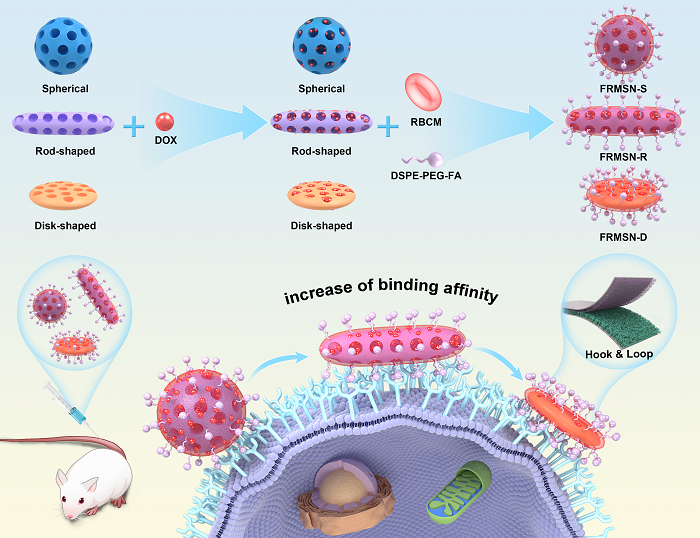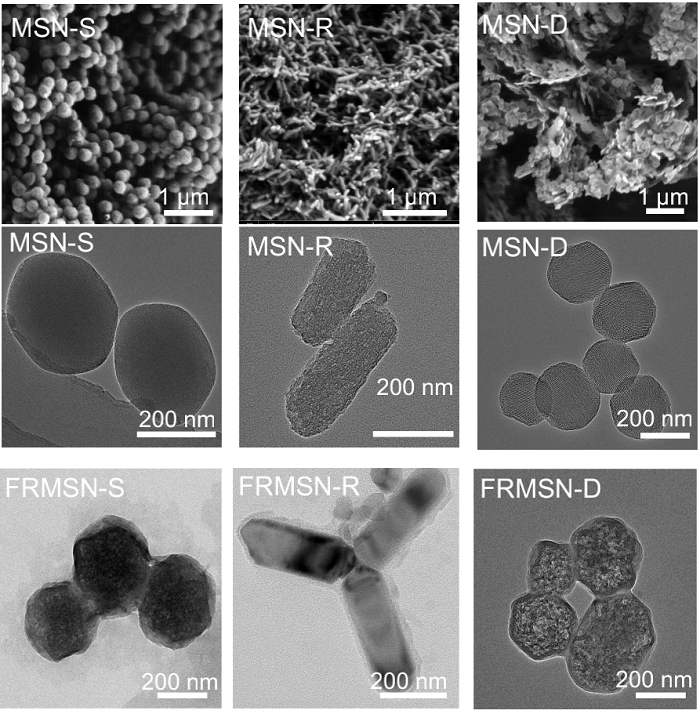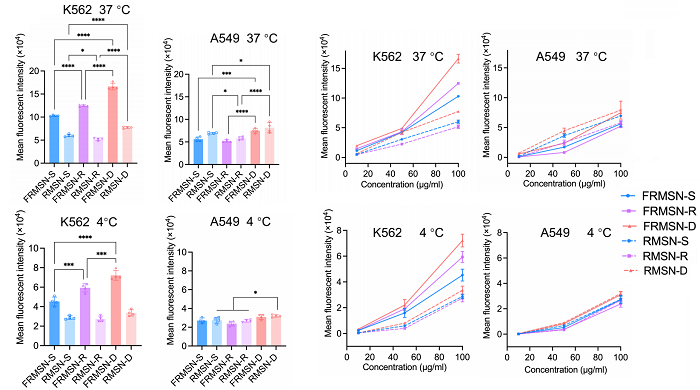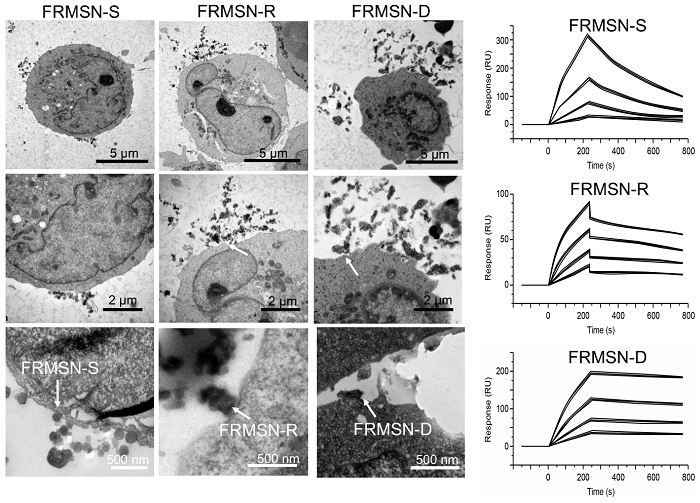
Recently, Prof. Wei Wu’s group at Fudan University School of Pharmacy published a research article titled “ ‘Hook&Loop’ multivalent interactions based on disk-shaped nanoparticles strengthen active targeting” in Vol. 354, Journal of Controlled Release.
Research and development of targeted drug delivery systems (TDDS) have witnessed rapid progress in the last few decades, and several milestone products have been successfully launched, such as doxorubicin liposomes and paclitaxel albumin nanoparticles which have played an indispensable role in clinical therapy. TDDSs are generally classified into passive and active targeting delivery systems. Those limited number of marketed products all fall within the category of passive TDDSs. So far, there is no active TDDS successfully marketed, contrasting sharply with the colossal input of resources and exponentially growing publications. Inadequacy in targeting efficiency remains one of the leading reasons that results in a low translation rate of TDDSs.
To address this problem, Wu’s group proposed a new strategy to strengthen active targeting efficiency by establishing multivalent interactions between nanocarriers and target cells and reinforcing ligand/receptor affinity via manipulating the shape of nanocarriers. Multivalent interactions are pivotal in various life processes; for example, the invasion of pathogens is based on multivalent interactions. Previous studies revealed that raising ligand density on nanocarrier surfaces and changing nanocarrier shape (e.g., spheres®rods) could enhance ligand/receptor affinity by achieving multivalent interactions to a certain extent. Motivated by this, the current study exploits disk-shaped nanocarriers to attain multivalent interactions to maximize nanocarrier-cell affinity and thereby active targeting efficiency. To highlight the superiority of the disk shape, its targeting efficiency was compared to that of the other two shapes, i.e., spheres and rods. Theoretically, there is a progressive increase in the interactions between nanocarriers and cell membranes when changing the mode of contact from “point” to “line” and then to “plane”. The contact on a “plane” favors multivalent interactions. The underlying rationale could be vividly metaphorized by Vecro fasteners. One side of a Vecro fastener is designed with multiple hooks and loops to the other. Upon contact of the two planes, multiple hook-loop interactions make the two sides stick firmly together.

The design rationale of this study and schematic illustration of the superiority of disk-shape-based multivalent interactions
To validate the hypothesis of this study, mesoporous silica nanoparticles (MSN) with discriminative geometry were employed as the substrates. Red blood cell membranes (RBCM) were coated to the surface of MSNs to impart them with long-circulating features on one hand and to provide a basis for anchoring ligands (folates) utilized to decorate the nanocarriers. Folate decoration was attained by inserting folate-PEG-DSPE into RBCM coatings. The final folate-decorated MSNs with different shapes are named as abbreviates—FRMSN-S, FRMSN-R, and FRMSN-D, with prefixes “F” and “R” referring to “folate” and “RBCM coating” and suffixes “S”, “R”, and “D” referring to “sphere”, “rod”, and “disk”, respectively. SEM and TEM revealed a diameter of 230 nm for spheres, long and short diameters of 220 nm and 80 nm respectively for rods, and a diameter of 210 nm with a thickness of 30 nm for disks.

SEM and TEM photographs of MSNs of different shapes
The concept of multivalent interactions based on nanocarrier shapes is validated adequately by a series of analytical tools including Western blot, flow cytometry, confocal laser scanning microscopy, bio-TEM, and so on. Since disk-shaped nanocarriers interact with cell membranes via a plane, their ligand/receptor contact area is the biggest, which favors stronger multivalent interactions than both the rods and spheres. The analysis by Biacore biomolecular interaction analyzer discloses the affinity of folate ligands to receptor proteins, further confirming the superiority of disk-shaped nanocarriers over rod-shaped and spherical ones in achieving multivalent interactions.

Determination of the affinity of FRMSNs and MSNs of different shapes with K562 and A549 cells

Bio-TEM photographs revealing the interaction of nanocarriers of different shapes with cell membranes and determination of the association constant of folate with receptor proteins
The effects of different particles on the proliferation capacity of K562 cells were investigated by the CCK-8 method. DOX-loaded FRMSN-D had the best ability to inhibit cancer cell proliferation. The apoptosis of K562 cells treated with different particles was detected by Annexin V-FITC kit, and the results showed the proportion of early apoptocytes and late apoptocytes of the FRMSN-D group was significantly higher than that of FRMSN-S and FRMSN-R, which promoted a large number of cells to enter the early apoptosis stage. Finally, the mouse model of CML was successfully established, and the efficacy of DOX-loaded FRMSN-S, FRMSN-R, and FRMSN-D for the treatment of CML was evaluated. Compared with FRMSN-S and FRMSN-R, FRMSN-D significantly prolonged the survival rate of CML mice and maintained relatively stable body weight. The number of white blood cells in the FRMSN-D group was maintained at about 3.5×109/L during treatment, and the disease control was the most stable. One week after the end of treatment, the CD45+ cell ratio of the FRMSN-D group was only 3.38%, significantly lower than that of the other two groups and the DOX solution group. The FRMSN-D group had the lowest degree of cancer cell invasion, with basically no obvious tumor cells and rare granulocyte infiltration.
In summary, this study used spherical, rod-shaped, and disk-shaped folate-modified biomimetic mesoporous silica nanoparticles to verify the shape-based multivalent interaction between nanoparticles and target cells, and the results showed the disk-like structure was conducive to enhancing the multivalent interaction between ligands and receptors, improving the targeting efficiency, and providing ideas for the subsequent design and development of actively targeted nanoparticles with high targeting ability.
https://doi.org/10.1016/j.jconrel.2023.01.022